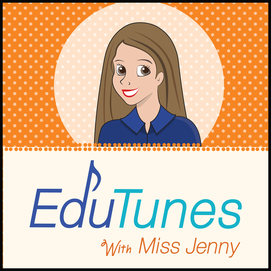|
I'm so excited for a NEW development in my EduTunes journey. I am working with Heidi Butkus, and my songs will be included in her "HeidiSongs" website. We believe our songs are complementary. When used together, we can provide a greater teaching and learning experience for you and your children.
In the video above, I've included an example that uses Science of Reading research-based concepts to teach sight words. The latest research indicates that sight words are best taught in terms of phonics. For example, in the word "has," two letters (h-a) can be sounded out using basic phonics skills. Two-thirds of this word makes sense if you know basic letters and sounds, while only 1/3 of the word "doesn't follow rules." What if we consider that "s says /z/" is a legitimate spelling pattern, rather than an exception to a rule? Children can add "s says /z/" to their repertoire of phonics patterns, so that 100% of the word now "makes sense." Children can apply the new rule or pattern to a variety words, such as "is," "as," and "his." These are no longer "sight words"--they're just words that follow (new) known patterns. I've made a video using two songs to show the power of music to teach this concept. I've transcribed most of it below in case you'd rather read about it. In Heidi's song "Has," she sings, "First you make an 'h' and then an 'a' and then an 's,' and that is has, has, has. There is no z." Very young children and struggling readers will be motivated to sing and dance with the actors as they learn new words. Let's talk about how to expand on reading with this song. Ask kids, "What do you notice about this song?" Heidi already gave them an idea. A student might say, "I sound out h-a-s. It seems like the 's' should be a 'z.'" Now, you've used the inquiry process to set the stage for a discussion of skills: Sounding out words and learning that s says /z/. Heidi and I both have songs about sounding out words in our phonics sets. Let's focus on the observation that "s says /z/." Ask children if they can think of any other words that follow this pattern. In my song, I say, "S says /z/ at the end of some words: Is, as, his, has, s says /z/." Now kids see four examples of a common pattern in the language. Kids learn from repetition. Depending on your students' needs, you may want to focus on one word or play the sight words songs for "Is," "As," "His," and "Has" daily. Then, follow up with "S Says /z/." I hope you see why Heidi and I make a great team. Ask simple questions like, "What do you notice?" at the end of our songs to promote inquiry. In this example, students' ideas help the whole class to learn to sound out words, and to find a new pattern in the language. In any song, asking "What do you notice?" will lead the whole class to higher levels of learning. Thank you! Please head to the HeidiSongs site to get ALL of my videos, plus Heidi's, for FREE for 30 days!!! Heidi's "Has" song is available on site word sets, and "Has" is in my Early Phonics and monthly sets for grades 1-2.
2 Comments
Lisa Lipton
9/24/2020 08:56:41 pm
I love all of your songs! My students love singing along with you every day - AND they are learning too:) Thank you for all of your hard work creating such fun and educational songs for students :) You are a gem !
Reply
Leave a Reply. |
Welcome!Thanks for reading my blog. I'm excited to help you to incorporate evidence-based practices in your classroom or home. Archives
April 2021
Categories |
EduTunes Website: Copyright 2018 Jennifer Fixman Kramer. All Rights Reserved.

 RSS Feed
RSS Feed
